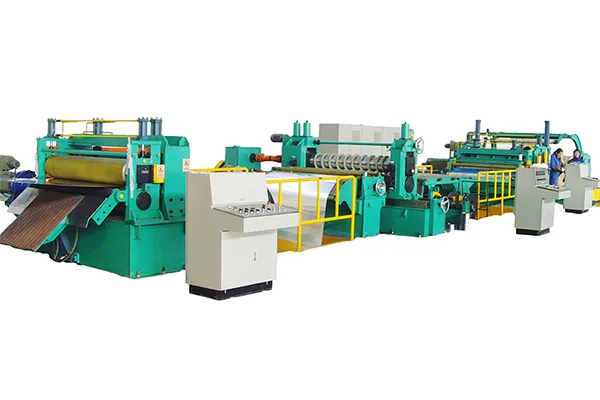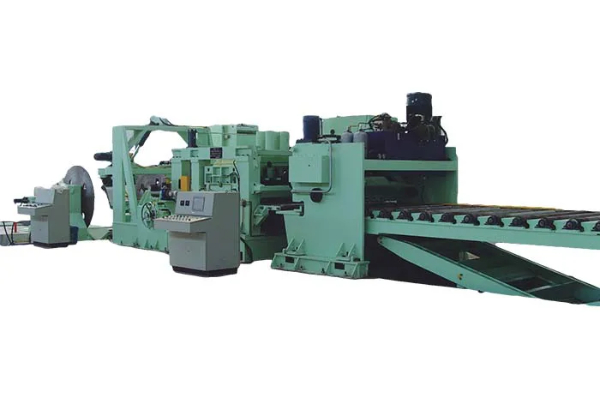
Trends in Steel Laser Cutting Technology- Innovations and Advancements
- By:Metmac
- 2024-07-18
- 213
In the realm of metal fabrication, laser cutting has revolutionized the industry with its precision, speed, and versatility. Steel, a material renowned for its strength and durability, has become a prime candidate for laser cutting, opening up new possibilities for intricate designs and complex geometries. This article delves into the latest trends in steel laser cutting technology, exploring the innovations and advancements that are shaping the future of metal fabrication.
High-Power Laser Technology
The advent of high-power lasers has significantly expanded the capabilities of steel laser cutting. These lasers, capable of generating power outputs in the range of kilowatts, allow for faster cutting speeds, greater cutting depths, and improved edge quality. With high-power lasers, manufacturers can process thicker steel plates with ease, enabling the production of robust and intricate components.
Fiber Laser Technology
Fiber lasers have emerged as a game-changer in steel laser cutting. Unlike traditional CO2 lasers, fiber lasers utilize a highly efficient fiber optic cable to deliver the laser beam to the cutting head. This results in higher beam quality, reduced maintenance requirements, and improved energy efficiency. Fiber lasers excel in cutting thin to medium-thickness steel, offering exceptional speed and precision.
Multi-Axis Cutting Systems
Multi-axis cutting systems have introduced a new level of flexibility and complexity to steel laser cutting. These systems incorporate multiple axes of motion, allowing the laser head to move in various directions for intricate shapes and three-dimensional cutting. By utilizing advanced software, multi-axis cutting systems can optimize toolpaths and reduce cycle times, enhancing productivity and accuracy.
Automation and Robotics
Automation and robotics are transforming steel laser cutting by increasing efficiency and reducing the need for manual intervention. Automated material loading and unloading systems streamline production workflows, while robotic arms can handle workpiece manipulation and part removal. Advanced control systems enable seamless integration of automation components, resulting in optimized cutting processes and increased productivity.
Laser Welding and Cutting
The convergence of laser cutting and laser welding technologies has created exciting possibilities for steel fabrication. By combining these processes in a single machine, manufacturers can perform both precise cutting and high-quality welding operations on the same workpiece. This integrated approach reduces setup times, eliminates the need for secondary operations, and ensures precise and repeatable results.
Conclusion
The trends in steel laser cutting technology reflect the continuous evolution of the metal fabrication industry. Innovations in laser power, beam quality, multi-axis cutting, automation, and the integration of laser welding and cutting are driving the industry towards increased productivity, precision, and versatility. As technology continues to advance, we can expect even more groundbreaking developments in steel laser cutting, unlocking new opportunities for innovation and shaping the future of metal manufacturing.
-
Mastering Form and Force: A Guide to Modern Metal Plate Bending Machines
2025/12/16 -
Demystifying Sheet Metal Laser Cutting Machine Price: The METMAC Value Perspective
2025/12/16 -
Metal Sheet Machinery: The Engine of Modern Fabrication and the METMAC Advantage
2025/12/16 -
Beyond the Bend: The Power and Precision of the Modern Sheet Profile Machine
2025/12/16
-
Advanced Sheet Metal Rolling, Laser Cutting, and Folding Machines for Precision Fabrication
2025/10/31 -
High-Performance Sheet Metal Bending and Cutting Machines for Modern Fabrication
2025/10/31 -
High-Quality Sheet Metal Equipment for Sale: Efficient Solutions for Modern Manufacturing
2025/10/31 -
High-Performance Sheet Metal Equipment for Sale: Forming and Shearing Solutions for Modern Fabrication
2025/10/22
-
Understanding the Role and Function of Steel Strip Slitting Machines
2024/05/11 -
Maintenance Tips for Longevity of HVAC Duct Machines
2024/05/11 -
Innovations in Steel Strip Slitting Machine Design and Technology
2024/05/11 -
Improving Accuracy in Metal Fabrication with Laser Metal Shear Machines
2024/05/11
-
A Guide to the Latest Innovations in Sheet Metal Folding Machines
2024/11/29 -
Key Features to Consider When Investing in a Sheet Metal Folding Machine
2024/11/28 -
Enhancing Precision with Advanced Sheet Metal Folding Machines
2024/11/27 -
How to Choose the Right Sheet Metal Folding Machine for Your Workshop
2024/11/26







